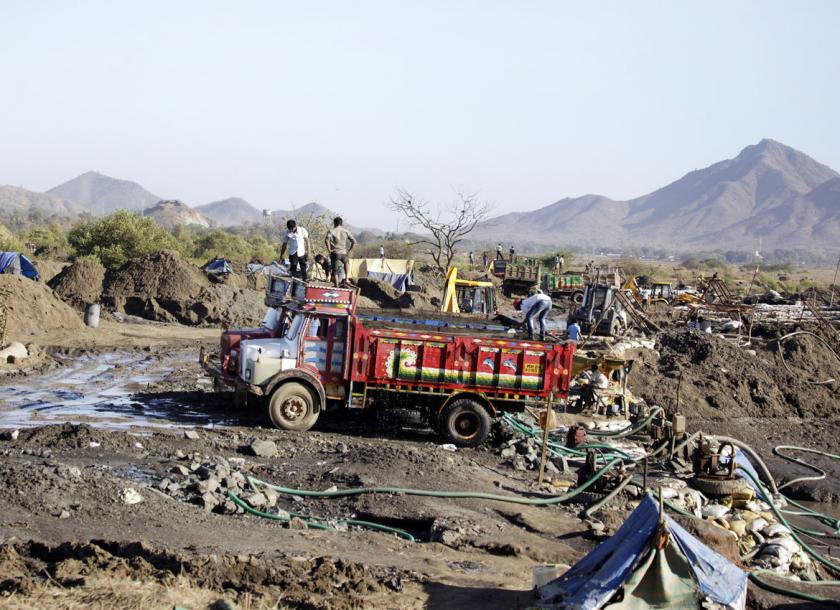Legal experts and authorities announced that a locally registered company, Kyaw KS Development Trading Company, needs MIC approval to extract 5 million cubic metres of sand mining over five years in Tanintharyi Region
6 Jul 2018
Legal experts and authorities have confirmed with The Myanmar Times that the sand mining activities proposed by Kyaw KS Development Trading Co require approval from the Myanmar Investment Commission (MIC). Prior to starting any activities, an Environmental Impact Assessment (EIA) is also necessary by law.
Official documents signed by township administrators in Tanintharyi seen by The Myanmar Times revealed that Kyaw KS, a local company registered in Yangon Region, is seeking township approval to extract 5 million cubic metres of sand over five years in Tanintharyi Region in partnership with Singapore-based Delta Gold. The documents made no mention of EIAs or MIC approval, only that a ground survey was conducted, arguing “no objections” were raised and the project will have “no environmental damage”.
The claims made in the documents are at odds with the views of experts and environmental specialists, who have warned that the activities will be highly detrimental to a nearby pearl farm and harm the biodiversity and livelihoods of local fishing communities. The Myanmar Centre for Responsible Business (MCRB), WWF Myanmar and Fauna & Flora International have all raised serious objections regarding the project.
In response to a question from The Myanmar Times, a spokesperson from the Directorate of Investment and Company Administration (DICA) said that sand mining activities fall under the MIC jurisdiction and that those projects require approval from the MIC. The spokesperson declined to comment on whether Kyaw KS has applied or not and would not be drawn to project specifics.
Daniel Aguirre, Greenwich University’s senior lecturer in law and former legal adviser of the International Commission of Jurists in Yangon, urged DICA to disclose the details and said that keeping that information confidential is “disappointing”.
“While it is understandable to keep the details confidential until the EIA is complete, whether they have applied or should have to apply must be public knowledge,” the academic commented. Public trust depends on the MIC and regional committees being fully transparent, while civil society should be being consulted throughout the EIA process.
Meanwhile, U Kaung San Oo, secretary of Tanintharyi Region government, said that Kyaw KS has submitted the sand mining proposal to the regional government for approval. The regional cabinet will examine the proposal and make a decision on whether to approve the proposal or not.
Under the Myanmar Investment Law section 36(c), an investor must apply for an MIC permit if their project “is likely to cause a large impact on the environment and the local community”. In addition, Rule 5(a) of the Myanmar Investment Rules defines such a project which requires an EIA under the Environmental Conservation Law and EIA Procedures.
‘While it is understandable to keep the details confidential until the EIA is complete, whether they have applied or should have to apply must be public knowledge.’ Daniel Aguirre, Greenwich University
William Greenlee, partner at law firm DFDL in Myanmar, said that sand mining does depend on size to determine if EIA is necessary. For a volume of 5 million tonnes, an EIA would therefore be characterised as “projects which are likely to cause a large impact on the environment and local community” and therefore required to submit MIC proposal (for an MIC permit), as opposed to simply seeking an endorsement.
Chris Hughes, partner at SCM Legal, added that, under the ECL, the investors are meant to start their applications for environmental approvals before seeking other permits (except an MIC permit). Hence, they have to be engaging in this before seeking approvals at the township level but, in practice, “things are best done in parallel”.
“Similarly, it’s not unusual for an investor to engage at the township level and with other relevant ministries or regulators as well on a potential project before making the formal application to the MIC. So, if that’s what this developer is doing here, it’s pretty standard, but one thing that is absolutely clear under the Investment Law is that before an investment requiring an EIA really starts, they must receive the MIC permit,” Mr Hughes commented.
According to Annex 1 of the Myanmar Environmental Impact Assessment Procedures, sand mining projects extracting more than 50,000 cubic metres per annum requires an EIA. Given that Kyaw KS plans to extract 5 million over 5 years, it is legally required to undertake an EIA prior to any activities. But so far, no evidence suggests that the company has commissioned any assessment by a qualified company. Based on the official documents, all that appears to have happened to date is that Kyaw KS has met local stakeholders, organised by the township, to reassure them that nothing bad will happen as a result of their operations.
An EIA should include assessments of the topography and biodiversity of the seabed area, and an assessment of surrounding sensitive areas which might be affected, and how to mitigate any negative impact, according to Vicky Bowman, director of MCRB. This is particularly important as the islands to the west of the proposed sand-mining area have high conservation value due to corals and marine biodiversity.
The Myanmar Times visited the company’s address provided by its registration at DICA in mid-June, but the company has not responded to requests for comment. No contact details of the company are available online.
(The Myanmar Times: https://www.mmtimes.com/news/kyaw-ks-needs-mic-permit-extract-sand-authorities.html )











